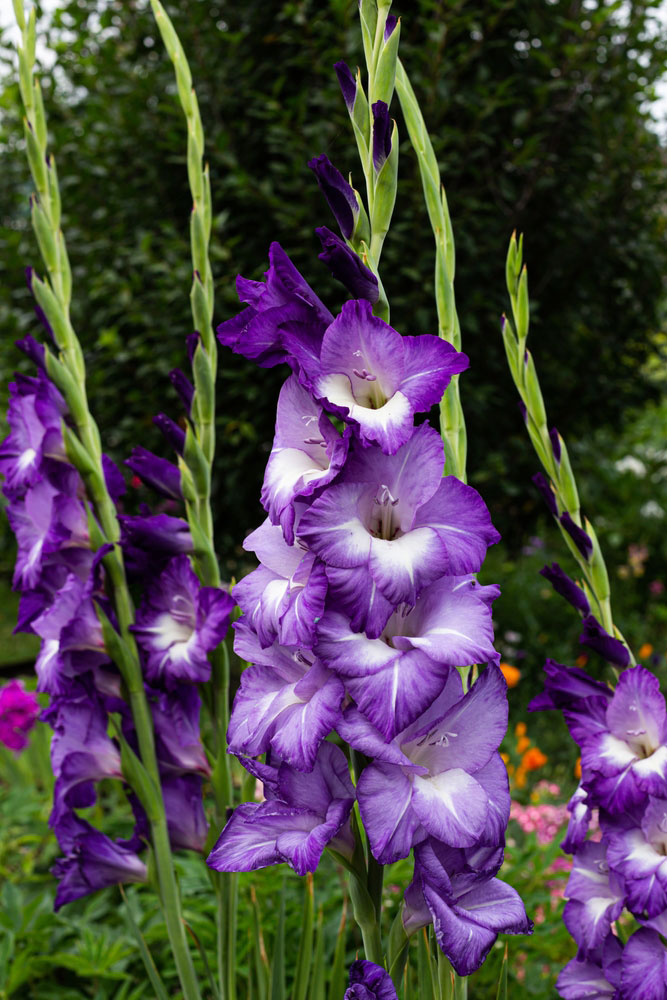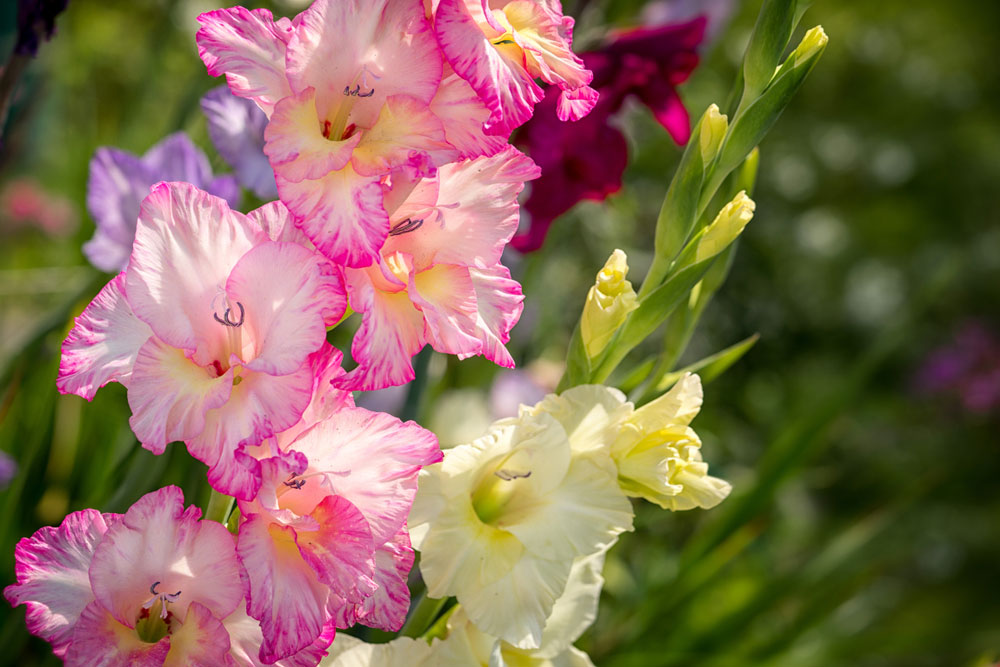
In this guide, we will cover tips on growing gladiolus plants in Florida climates and how to care for them in your Florida garden.
Light
Gladiolus prefers a sunny location that receives six to eight hours of direct sunlight a day but will grow in less light. Blooming may be inhibited if they receive less than six hours of direct sunlight.
Water
Gladiolus does best in evenly moist soil that does not dry out excessively between watering. A rainfall of 1 to 2 inches a week is typically enough for gladiolus. If your area does not get consistent rainfall, or you experience dry spells, water your gladiolus deeply once a week.
Temperature & Humidity
Gladioli are sensitive to cold weather and won’t begin growing right away if you plant them too early in the spring. They do best if planted when nighttime temperatures remain above 60 degrees.

Soil
Gladioli are not fussy about their soil, although they do prefer sandy loam. Because the bulbs need to be planted 6 inches deep it is essential that the soil is loose and workable. Gladioli need to be planted at least 6 inches deep to provide adequate support for the growing foliage.
Likewise, the soil needs to drain well as the gladiolus corms will rot in the soil if they are allowed to sit in soggy soil.
Fertilizer
Gladioli aren’t heavy feeders, but they do enjoy a boost of fertilizer in the spring when new growth begins. Give them a balanced fertilizer like 10-10-10 when new foliage is 2 to 3 inches high. If using granular fertilizer, work it into the soil gently to avoid damaging the young plants or their roots.
| Botanical Name: | Gladiolus palustris |
| Common Name(s): | Gladiolus, Glads, Sword Lily, Aunt Eliza Rat’s Rail |
| Plant Type: | Tender perennial |
| Mature Size: | 2 to 5 feet |
| Sun Exposure: | Full sun |
| Water Needs: | medium |
| Soil Type: | Sandy loam |
| Soil pH: | 6.0 to 6.5 |
| Bloom Time: | Summer through fall |
| Maintenance: | Medium |
| Flower Color: | White, yellow, pink, orange, red, purple, green |
| Hardiness Zones: | 8 – 10 |
| Toxicity: | Toxic to humans, pets, and livestock |
Are they Toxic?
Gladiolus corms are toxic to people, pets, and livestock and can cause intestinal issues, such as abdominal pain, nausea, and diarrhea if they are ingested. Seek medical advice if your children or pets accidentally eat a piece of gladiolus.
Handling the corms can also cause contact dermatitis. Wear protective gloves when handling gladiolus corms.

Planting Gladiolus
Plant gladiolus corms in the spring when nighttime temperatures remain above 60 degrees.
- Dig a hole six to eight inches deep and amend it with compost or well-rotted manure.
- Work it into the soil and plant the gladiolus corms at the bottom of the hole.
- Cover the corms with fresh soil and firm it down with your hands.
To extend the blooming season of your gladiolus, plant some corms every two weeks until mid-summer. This ensures new plants will bloom as the older ones fade.
Digging and Dividing Gladiolus
Gladiolus that are allowed to naturalize may eventually become overcrowded and bloom sparingly. This is a sign you need to dig up the bulbs and divide them.
- Cut the foliage back to 6 inches.
- Dig up the bulbs and rinse off excess soil.
- Lay them in a cool, well-ventilated area out of direct sunlight to dry.
- Examine the corms carefully. The new corm forms on top of the old one and the old one typically dies. You will also likely find many small corms growing around the sides.
- Divide the corms and throw away old, shriveled corms.
- Replant the corms in similar growing conditions.

Deadheading and Pruning
Removing the old flower by deadheading keeps your flowerbed looking good and directs the plant’s energy into the plant’s bulbs (corms). This gets them ready for blooming the following year.
However, your gladiolus plant needs its foliage to harness and convert energy from the sun. Allow the foliage to remain until it dies back naturally in the fall.
Frequently Asked Questions:
Can you overwinter gladiolus in Florida?
Gladiolus bulbs are cold hardy in zones 8 and warmer. They can be overwintered and allowed to naturalize in Florida gardens.
Should you cut back foliage on gladiolus?
Gladiolus foliage performs photosynthesis to manufacture energy for the plant. Most of this energy is stored in the bulbs for next year’s blooms. Allow it to grow until it dies back naturally before cutting the foliage back.
How do you get gladiolus to bloom longer?
Plant gladiolus bulbs every two weeks until early summer. This ensures you have new gladiolus bulbs blooming all summer and into the fall. However, be aware that they will all likely bloom at the same time the following year.
Related Article: Check out the best perennial flowers to grow in Florida.






